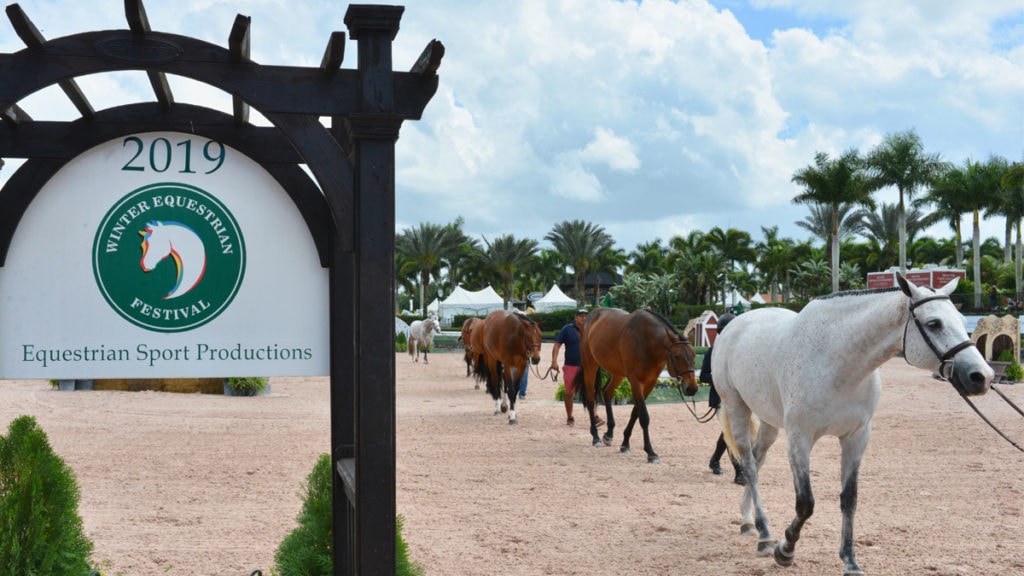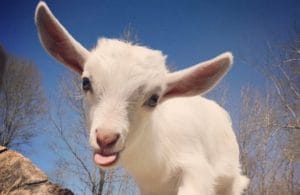What do you get when you mix sunny weather, horseback riding aficionados and pretty horses? You get the Winter Equestrian Festival.
Billed as the world’s largest and longest horse show, the Winter Equestrian Festival (WEF) consists of several horse competitions, including show jumpers, hunters and equitation, and runs for a period of 12 weeks (January through March). It draws more than 250,000 spectators every year, according to organizers, and welcomes competitors of all ages, from 2 years old to 70.
I’ve always been a horse lover, but I’ve never been to an actual horse show. That all changed in late March when I trotted over to the Palm Beach International Equestrian Center in Wellington, Florida, to check out WEF.
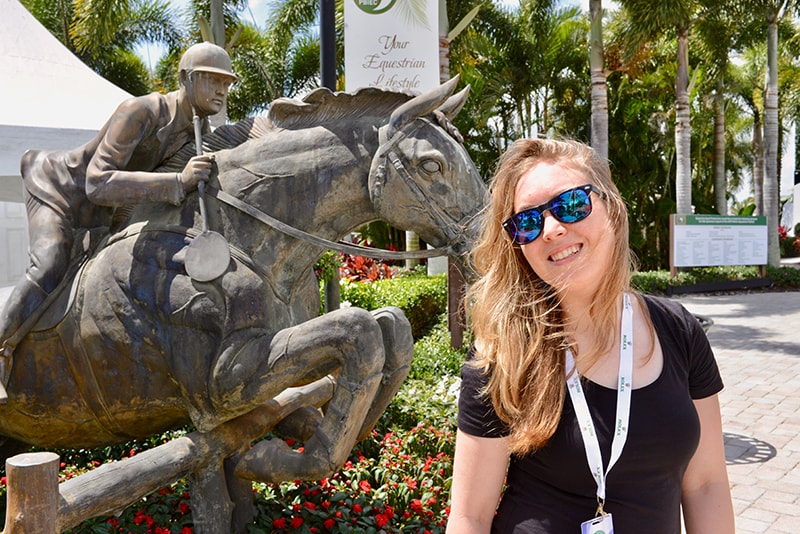
The author at WEF. By Nicole Janiga
As a first-timer, I didn’t know what to expect. Thankfully, my colleague and longtime rider, Nicole Janiga, tagged along to fill me in on all horse show happenings. Below are 12 of the most interesting things I learned about WEF.
1. There are lots of competitions, but at WEF, three dominate.
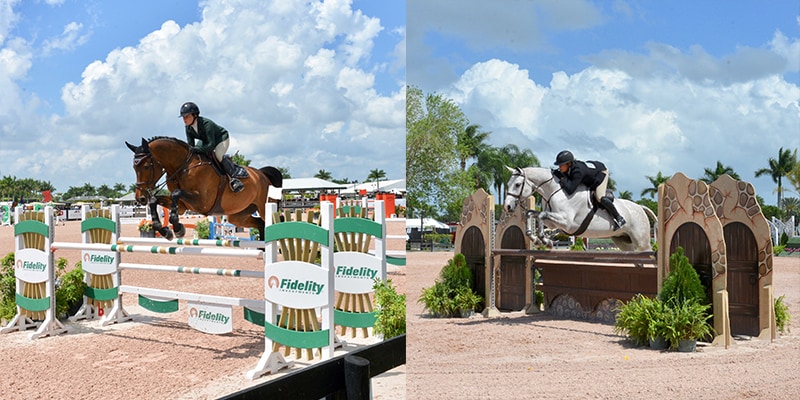
Jumper on left, hunter on right. By Nicole Janiga
The Winter Equestrian Festival has three main competitions that take place: show jumping, hunter and equitation.
The show jumper competition is based on speed and weighs heavily on the horse and rider’s ability to navigate through a course of jumps in a quick amount of time without faults. The horses need to do a “clean” run, meaning they can’t knock down any of the jump poles.
Hunter competitions depend a lot on the horse’s form. You’ll often notice that unlike the show jumping fences, which tend to be more colorful and decorative, the fences in hunter competitions are more conservative and comparable to natural obstacles. In hunter competitions, it’s about the horses looking effortless as they complete the run. The pace should be steady and even, and the jumps should be smooth.
While we didn’t get a chance to see any equitation classes while we were at WEF, it’s one of the main competitions focused mostly on rider form. Effective equitation is important across all disciplines to keeping the horse balanced, however, this is where the rider’s position gets judged most heavily.
2. There is a dress code.

This rider is dressed appropriately for a formal competition. By Nicole Janiga
You’ll notice many riders wear the same riding attire: an American Society for Testing and Materials (or ASTM-approved) helmet, a hunt coat or show jumping jacket, a collared shirt, breeches or riding pants, belt and field boots. Hair should be tucked back in a braid or ponytail or in a hairnet and under the helmet completely.
Hunter riders must abide by a more formal dress code in a rated show setting such as WEF with their hair up, white shirts, and traditionally navy jackets with black helmets and boots. Jumper riders, however, such as the one pictured above, can have different colored coats, shirts and their hair doesn’t have to be covered in the helmet.
For spectators, clothing is pretty casual. Unlike the Kentucky Derby, which has people dressed to the nines, you’ll notice attendees sporting leggings and a T-shirt or flowy summer dresses. More formal looks show up during each week’s main event, the Saturday Night Lights grand prix.
3. Horses are dressed and groomed according to the competition.
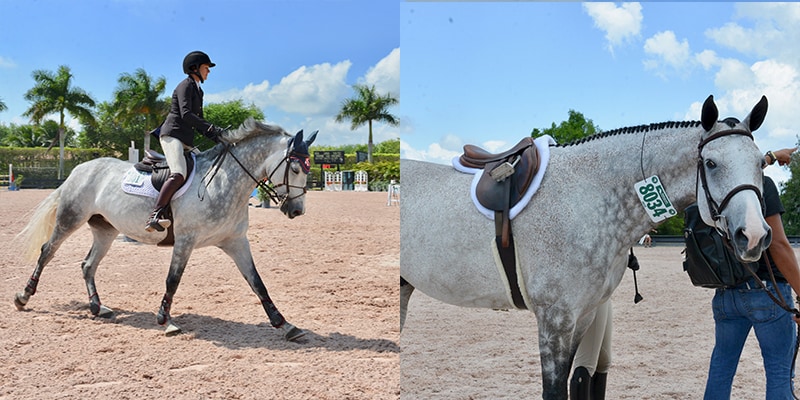
A properly dressed show jumper on left and hunter on right. By Nicole Janiga
From braided manes to horse tack, the way horses are equipped varies depending on the competition.
When it comes to show jumping, you’ll notice that the horses will either have loose manes or big braids with an unbraided forelock (the front hair on a horse’s head). The tack for show jumping tends to include a half pad and square pad beneath the saddle with a bigger stud girth. The tack of show jumping horses also tends to be less regulated. For example, the fly bonnet, shown on the left horse’s head above is allowed. While fly bonnets look like really cool superhero masks, they’re actually used to keep flies off the horse’s ears and muffle sounds that may be scary.
Hunters will tend to have more conservative tack. Their manes, forelocks and tails typically are in very tight, smaller braids. Usually the horse will have a shaped or fitted pad under their saddle. The hunter bridle is more traditional whereas a jumper bridle can incorporate a flash or figure-eight noseband.
One more main difference is that show jumpers and equitation horses are allowed to have boots on whereas hunters cannot. Think of show jumpers as the rebels in high school who tend to be more carefree and challenge the status quo and hunters as goody two-shoes who are usually dressed more conservatively.
4. Riders spend a lot of time waiting for their turn to compete.
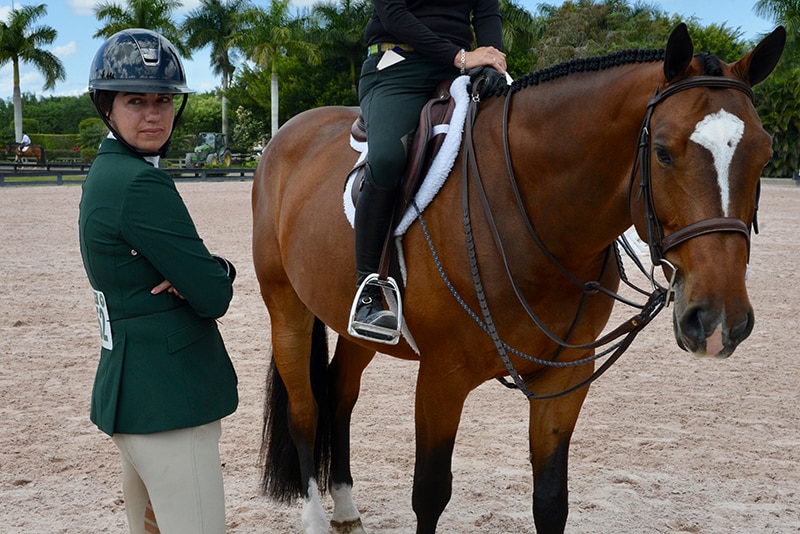
“Is it my turn yet?” By Nicole Janiga
While competitions are held all throughout the day, an actual individual round for a rider is only for a short time—usually around a minute or so, actually! When they’re not competing, you’ll notice a lot of riders schooling, or warming up their horses, caring for them, learning their courses and also hanging out in WEF’s lounge areas.
5. There are dogs everywhere—and it’s allowed!
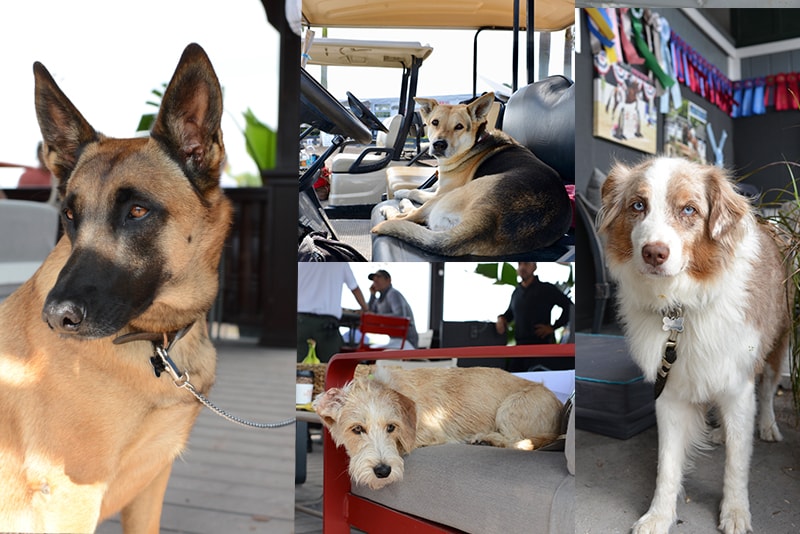
I spotted lots of dogs around the WEF show grounds. By Nicole Janiga
One of the first things I noticed when I got to WEF is that there are dogs all over the place. Whether they’re lounging in the stands, snoozing in golf carts or just hanging out in the stables, leashed dogs are welcomed—and admired—at WEF.
6. Some jumps have flags on them for directional use.
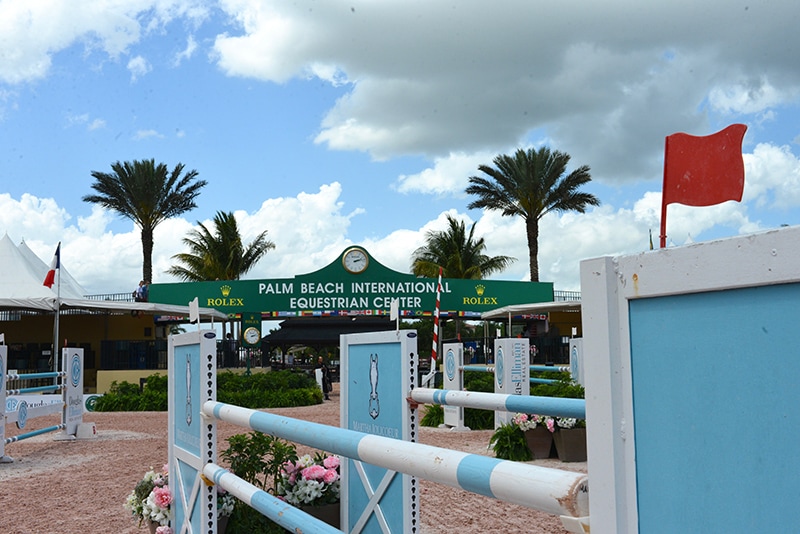
Flags displayed on this jump indicate which direction the horse should jump. By Nicole Janiga
Look closely some of the jumps and you’ll white and red flags at the top. This is more than decoration, it’s actually an indication of where the rider should direct their horse. The red flag should always be on the right.
7. A red ribbon on a tail is more than a pretty tail accessory.
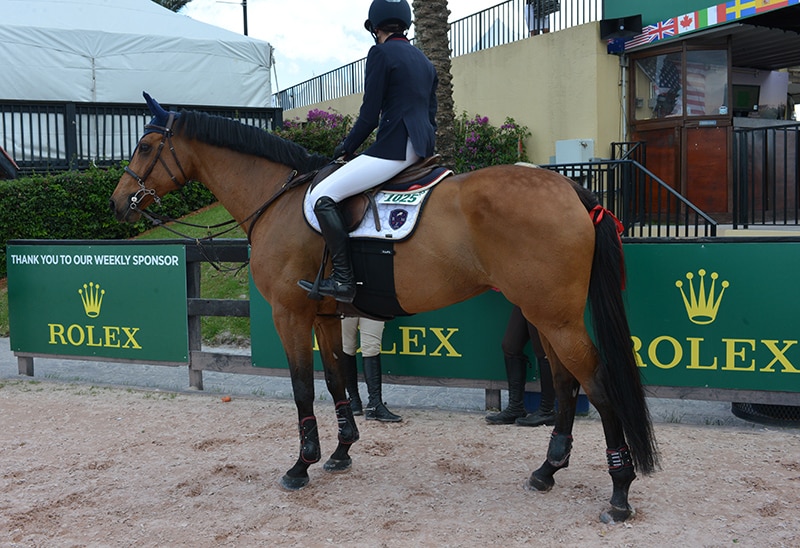
The ribbon may look pretty, but stay away from this horse’s backside! By Nicole Janiga
While horses will have their tail groomed differently according to the type of competition and rider preference, a red ribbon is far from a pretty complement to a tail. If you spot a red ribbon, that is a signal that the horse occasionally kicks, so be sure to stay away from its backside.
8. There are a ton of vendors.
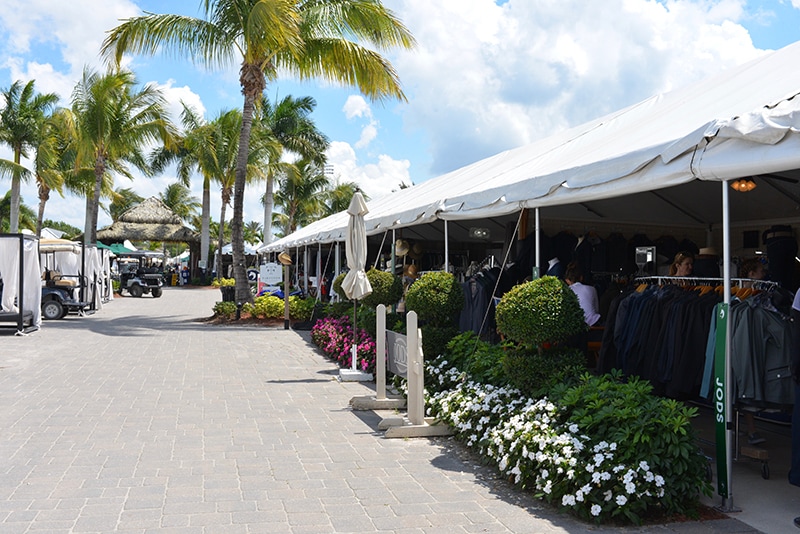
WEF offers all kinds of vendors. By Nicole Janiga
From horse saddles to boots to jackets, WEF vendors have something for everyone. You’ll find just about everything you need, whether you’re looking to build your horse tack or your personal wardrobe.
9. Winners at Winter Equestrian Festival are awarded ribbons.
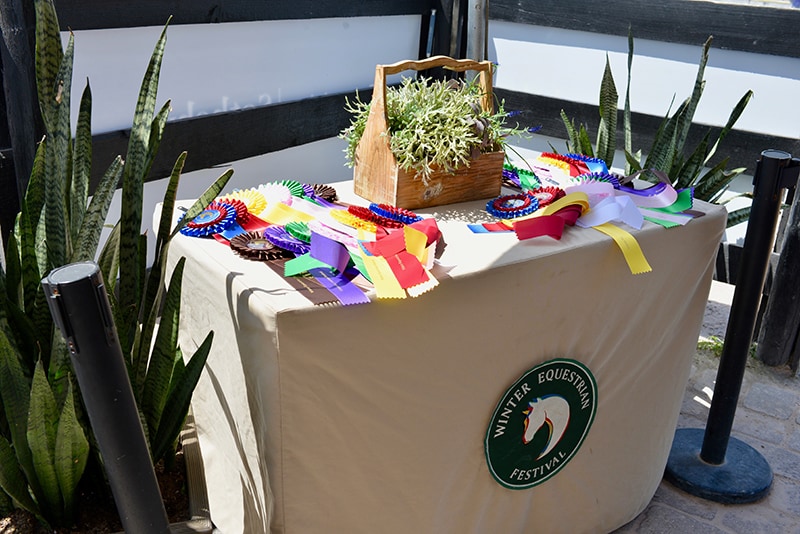
So many colorful ribbons. By Nicole Janiga
Unlike trophies that are usually associated with sports and other competitions, WEF offers ribbons for the winners of individual classes and divisions. They are colored according to placement.
10. Every once in a while, a tractor and water truck will “drag” the arena.
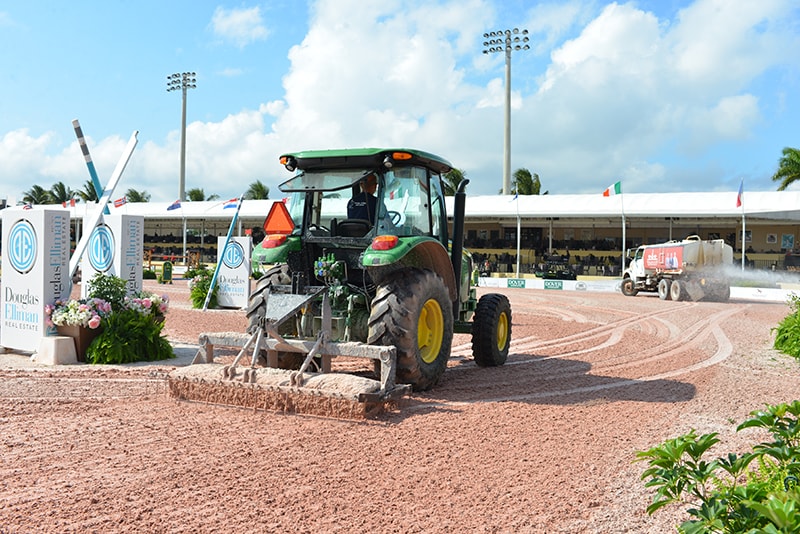
An arena track being cleaned. By Nicole Janiga
To keep the arena footing nice and even, there is a tractor and water truck that come around the track. Think of it as a Zamboni for land. The water truck helps minimize dust in the air, so there won’t be any dust storms taking over WEF while the tractor mixes the sand up, keeping it soft and loose.
11. The Winter Equestrian Festival brings in Olympic and international riders.

WEF brings in both international riders and Olympians. By Nicole Janiga
Out on the international arena, you’ll notice flags from all over the world. Since WEF is one of the largest horse shows in the world, people from all over will come to participate. There are also Olympians who come to WEF to compete. Beezie Madden and McLain Ward (names shown above) have both participated in the Olympics and have taken home medals.
12. There are on-location stables.
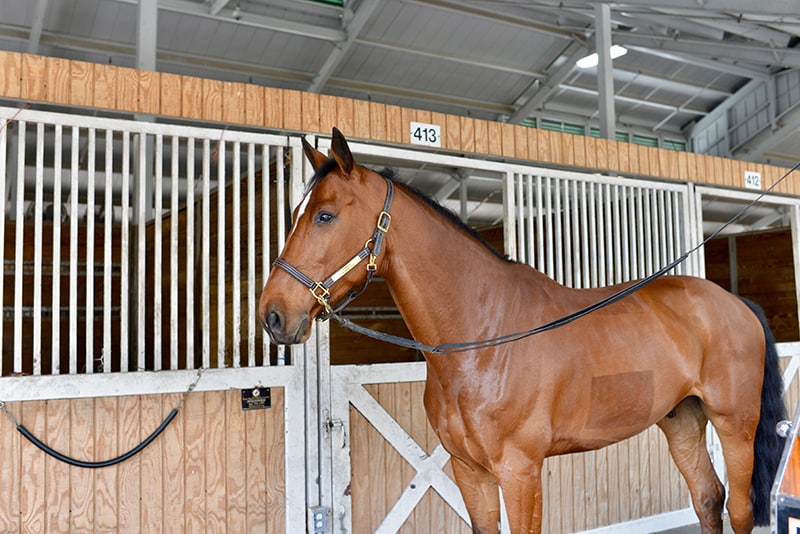
This horse is relaxing at an on-location stable at WEF. By Nicole Janiga
When the horses aren’t out in competition or practicing, they’re kept in temporary stables on-location in the Palm Beach International Equestrian Center. Take a look around and you’ll find stall drapes representing barns from all over the world.
By: Lauren Bronston
Share:
